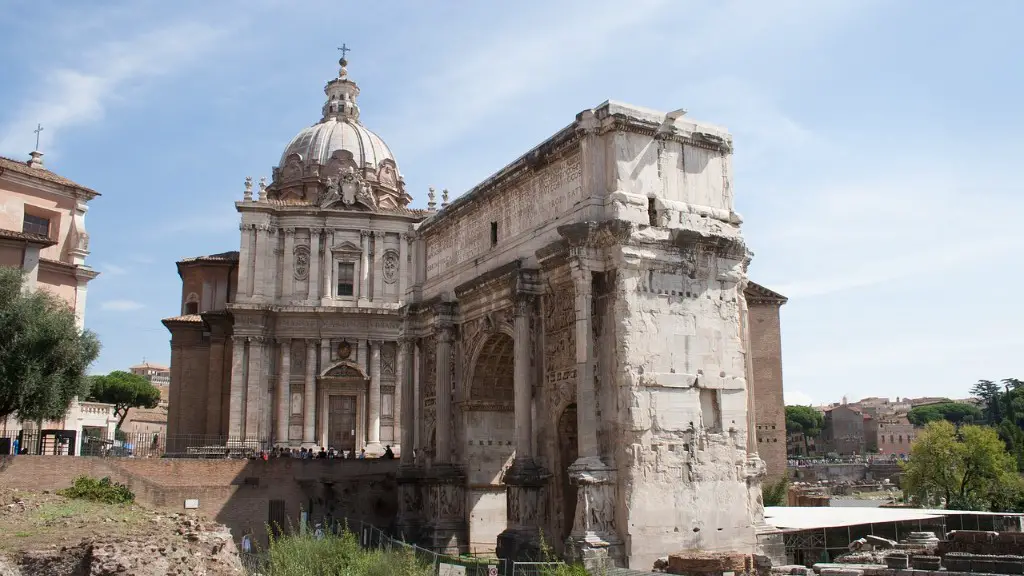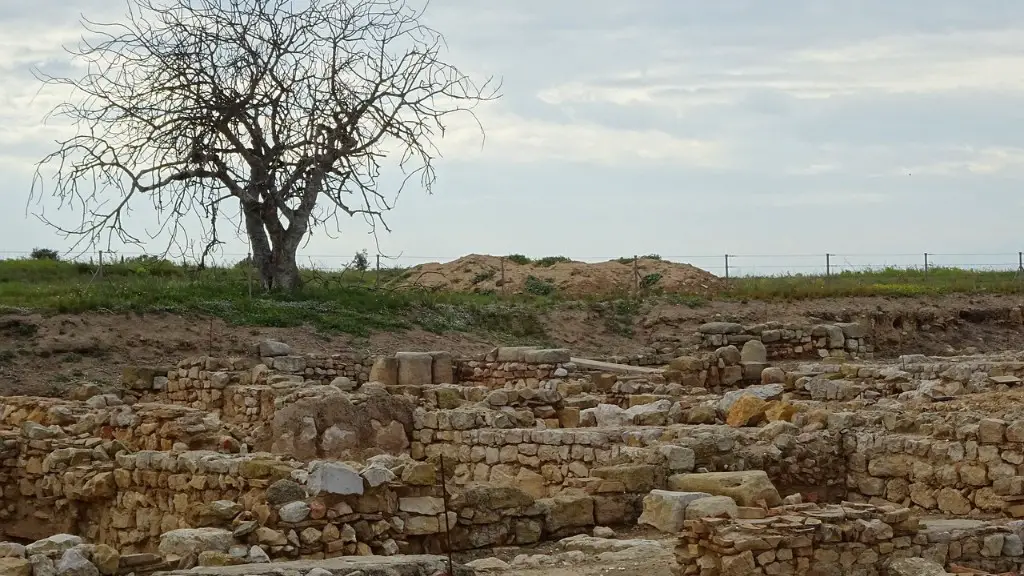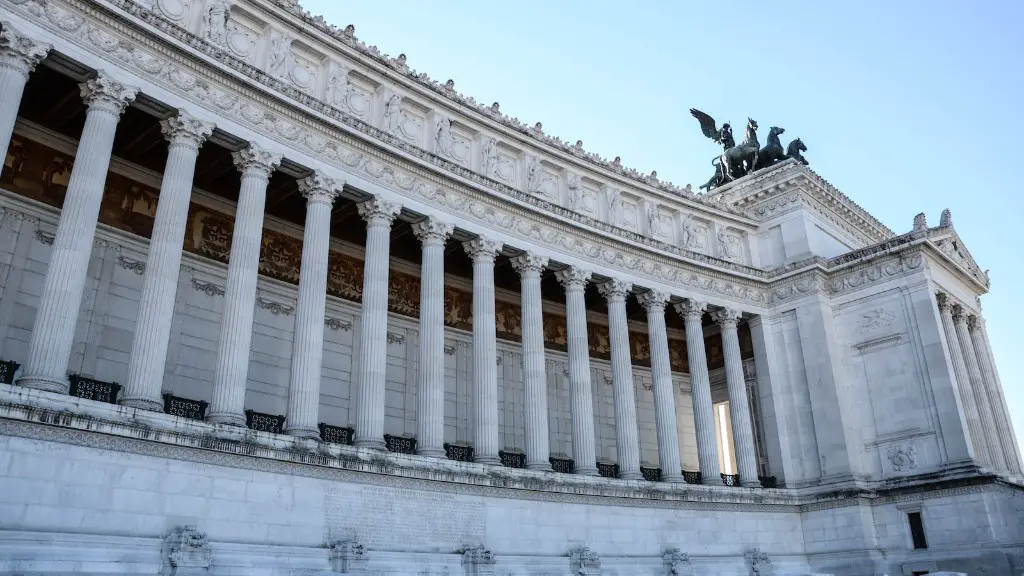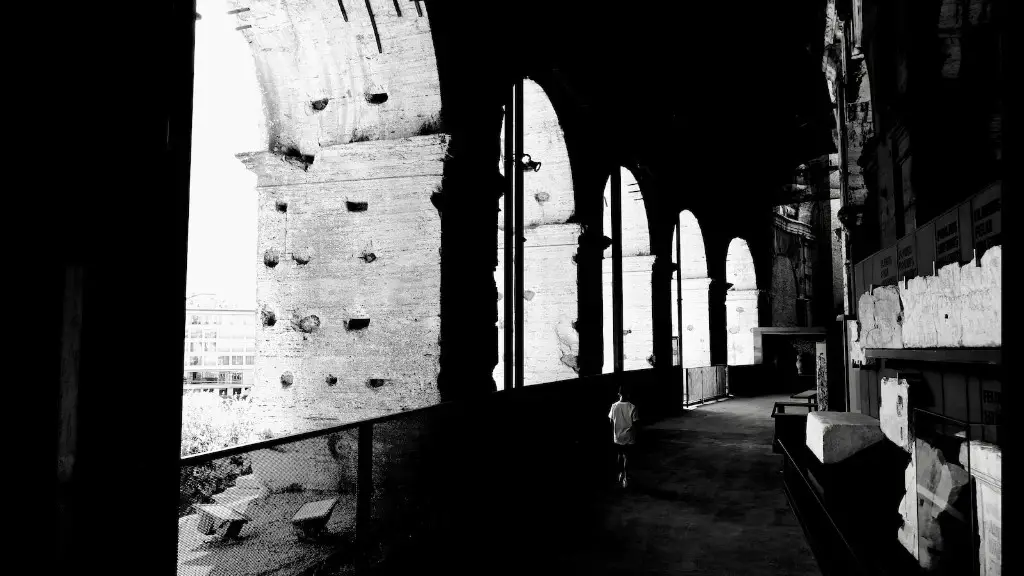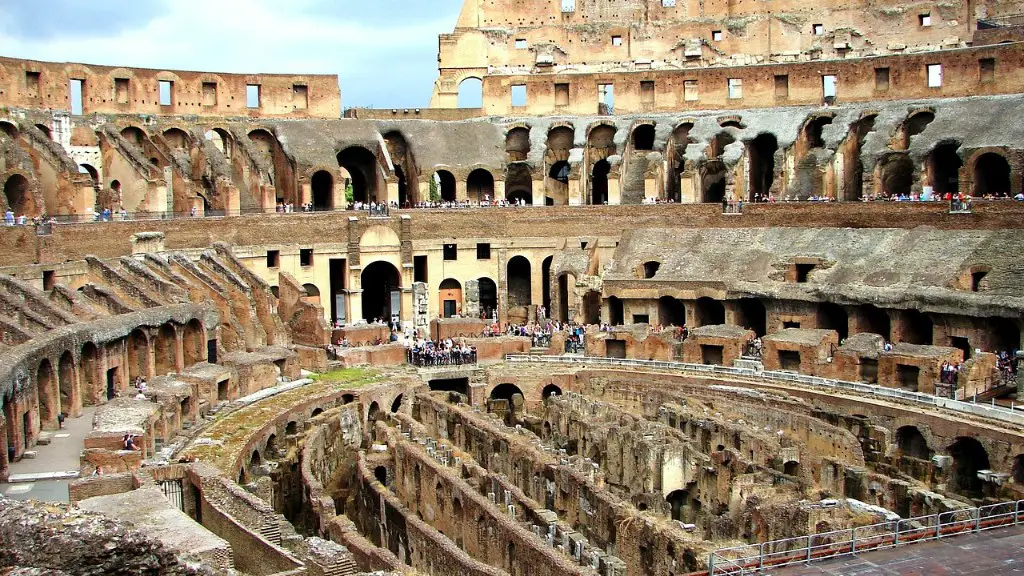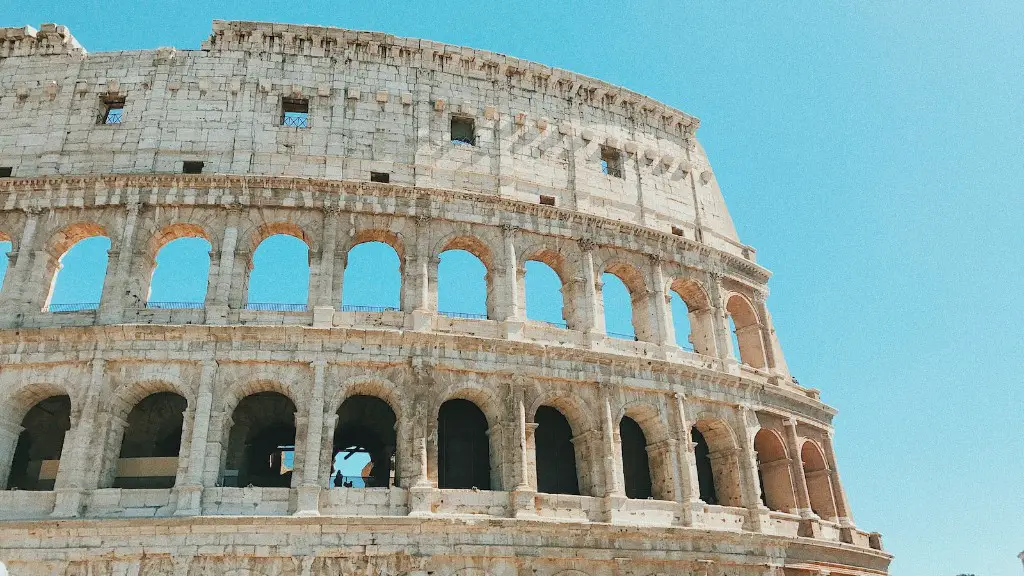The Colosseum of Rome is one of the most iconic buildings in history. Not only has it withstood the test of time, but its impact has been felt throughout the world. Its importance to ancient Rome and its legacy continues today. In this article, we’ll explore the purpose of the Colosseum in ancient Rome, as well as its historical and modern importance.
Constructed between 70 AD and 80 AD, the Colosseum was originally known as the Flavian Amphitheater. It was commissioned by Emperor Vespian and named in honour of his family’s dynasty, the Flavians. The Colosseum, shaped like an elliptical bowl, was built to be the grandest amphitheater of its time. It was an engineering feat in itself, and its height and size far surpassed any other amphitheater.
The Colosseum was built for one purpose: entertainment. It served as the primary site for gladiatorial combat and dramatic spectacles. Gladiatorial combat was an immensely popular form of entertainment for ancient Romans. People gathered to watch as gladiators, usually slaves or prisoners of war, fought one another or wild animals. The Colosseum could hold up to 50,000 spectators at once, so it was the perfect place to host these games.
The Colosseum was also used to host drama performances and plays. These plays and performances often incorporated religious rituals and ceremonies, adding to the entertainment. Moreover, the Colosseum was also used to host other social and political events, such as the announcement of a new emperor, proclamations, and public apologies.
Apart from being a place of entertainment, the Colosseum was also thought to have a spiritual purpose. It was believed to represent the power of the Roman Empire, and in some cases, its gods. Some historians also believe that each arch was aligned with a deity, making the building a place of worship as well.
Its influence continues today, as the Colosseum is one of the most visited tourist attractions in the world. It’s a symbol of Rome’s past, and its importance to the world has been recognized by UNESCO, who declared it a World Heritage Site in 1980.
Effects on modern society
Today its purpose is mostly about education. Historians and experts alike analyze the Colosseum in order to learn more about the past. Archaeologists have found artifacts throughout the ruins that can be used to uncover the history and traditions of ancient Rome. Its significance is remembered in popular culture as well. Films and shows such as Gladiator have served to keep the story of the Colosseum alive.
The Colosseum also has a tangible effect on the economy of Rome. Tourists from all over the world travel to Rome just to see it. This significant influx of tourists generates much needed revenue for the city, which is why the Colosseum has been recognized as a symbol of the country’s economic strength.
The Colosseum’s purpose in ancient Rome and its role in modern society has made it into one of the most important and influential sites in the world. It is a reminder of the power and ingenuity of the Roman Empire, as well as a symbol of its continued importance in the world today.
History
The story of the Colosseum is a long and complicated one. It was constructed over the span of a decade by an estimated 60,000 workers. It was made of stone, concrete, and later, marble. It was the most advanced amphitheater of its time, with two stories, many arches, and a vast number of statues.
When it was completed, it was dedicated in 80 AD by Emperor Titus in a grand ceremony. Thousands of spectators gathered to watch the first gladiatorial combat take place in the arena. The Colosseum was used for entertainment for centuries, hosting gladiatorial combat and other spectacles until its decline around the 5th century.
Throughout its time, the Colosseum was taken over by the Roman authorities and used as a fortress, a church, and even a burial site. In the 19th century, it was the focus of archaeological excavation, revealing many of the Colosseum’s secrets. In the 20th century, it became a symbol of the Roman Empire.
Architecture
The architecture of the Colosseum is one of its most unique features. Its elliptical shape, arches, and three levels are instantly recognizable and iconic. The Colosseum was divided into four levels, each of which could hold up to 15,000 people. Its arches were designed to provide support for the structure, as well as to reduce echoes from the stands.
The materials used for the Colosseum were chosen for both practical and aesthetic reasons. The first two levels were made of travertine stone, the third level was made of tuff and the fourth level was made of marble. Practically, these materials were chosen for their strength and durability. Also, the mix of materials was used both to accentuate the design of the building and to make it more aesthetically pleasing.
Still standing to this day, the Colosseum is a testament to the engineering and craftsmanship of the ancient Romans. Aside from a few modern modifications, the Colosseum has remained largely unchanged throughout its history.
Impact on the world
The purpose of the Colosseum is reflected in its far-reaching impact on the world. It is often used as a symbol of might, power and endurance of the Roman Empire. Its structure and architecture have also served as models for other arenas and theaters, such as the Globe Theatre in London. On a more symbolic level, the Colosseum is a reminder of the importance of entertainment and the need for celebration.
Its influence has spread far beyond the shores of Italy. The Colosseum has been featured in films, comics, and literature, making it an iconic symbol in pop culture. It is also a major tourist attraction, bringing tourist dollars to the local economy.
The purpose of the Colosseum in ancient Rome still lingers today. Its history and symbolism are deeply rooted in the foundations of modern society. Its story and legacy are sure to continue for generations to come.
Preservation
The Colosseum has experienced its fair share of damage due to natural disasters and the passage of time. Despite its turbulent past, the Colosseum is still standing today and is still one of the most impressive ancient structures. In recent years, the Colosseum has undergone extensive renovation and maintenance projects to ensure its preservation.
In addition to physical preservation, the Colosseum has also been protected from cultural vandalism. In the 19th century, the Colosseum was the target of many unscrupulous scavengers. To protect the Colosseum, the government put restrictions on excavation and prohibited the taking of souvenirs from the site.
The preservation of the Colosseum is essential to the preservation of Roman history. By protecting the Colosseum, we are protecting our past and keeping the stories of the past alive. As the symbol of the Roman Empire, the Colosseum’s importance and legacy will continue to be appreciated by generations to come.
Commemoration
The Colosseum still stands as a reminder of its original purpose: entertainment. Each year, the Colosseum hosts a reenactment of gladiatorial combat and other spectacles. Many reenactors recreate the traditions of ancient gladiator battles and put on a show for the thousands of spectators in attendance.
The reenactment of gladiatorial combat is actually part of a larger effort to commemorate the Colosseum and its history. The Colosseum is often a site for special events and ceremonies that celebrate its importance in the world. On occasion, it is even used as a venue for music and theater performances.
The purpose of the Colosseum in ancient Rome is still widely celebrated today. Its enduring legacy is celebrated by millions of people each year and its story will continue to live on in the hearts and minds of future generations.
